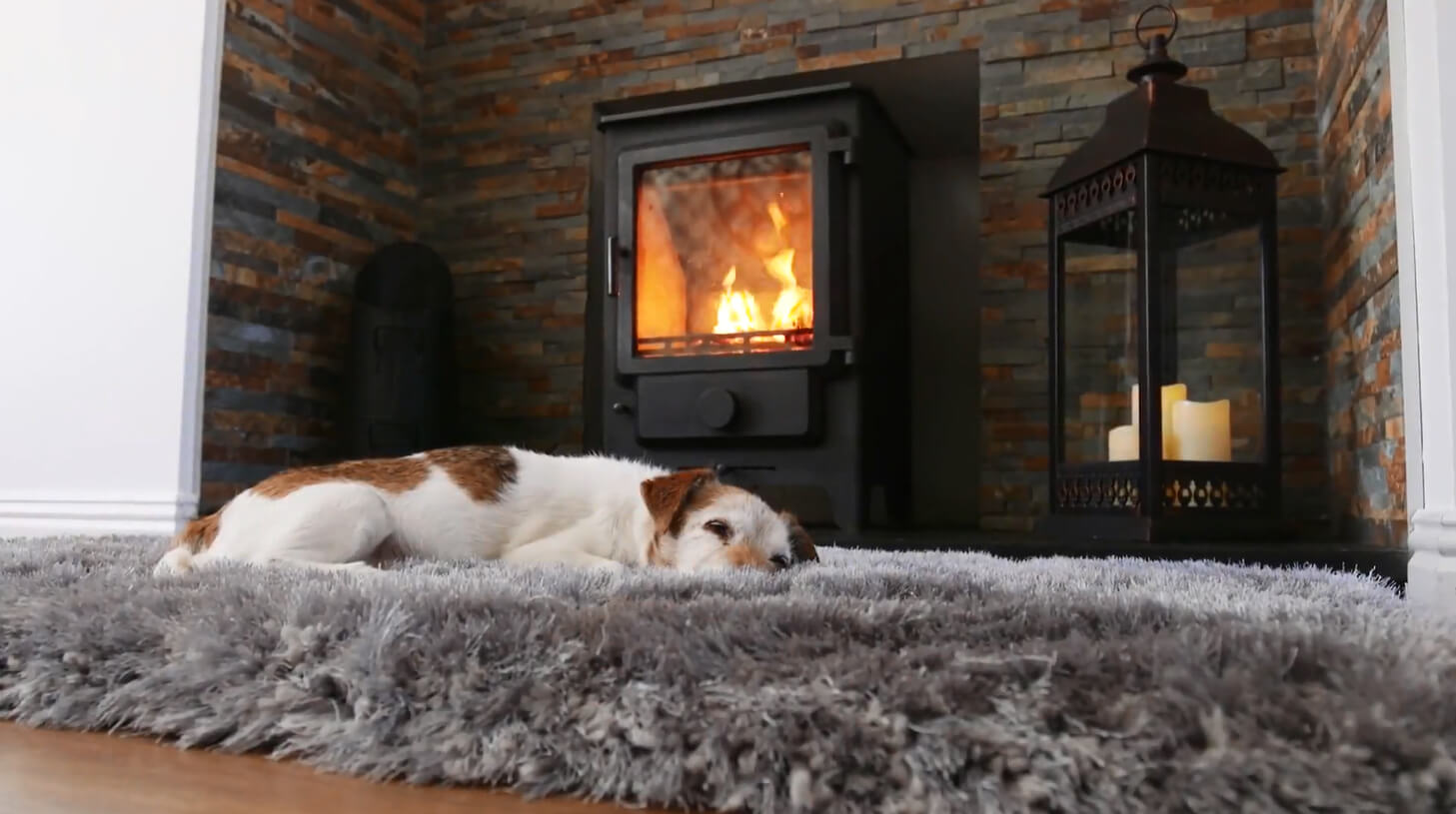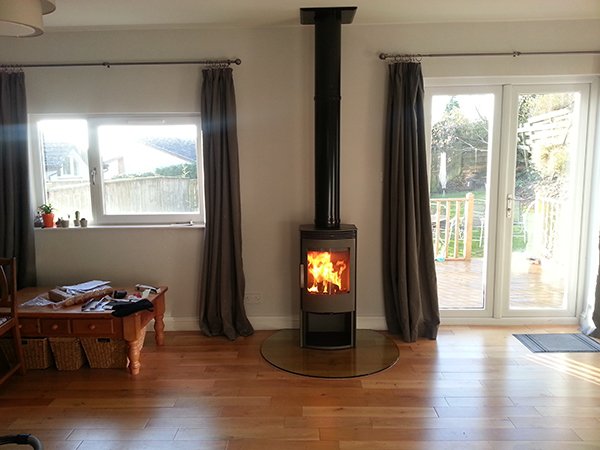How a Wood-Burning Stove Impacts Your Energy Bills
No rustic, culinary-forward home is complete without a wood-burning stove. From baked potatoes to chicken stroganoff, the possibilities with a wood-burning stove are virtually endless. However, avid home cooks may be twiddling their thumbs over skyrocketing energy bills—will a wood-burner work to your advantage or manifest an abundance of new issues?
Consult the Energy-Saving Trust
If you’re concerned about household energy use, consult the Energy Saving Trust, a well-respected independent body with in-depth access to the appropriate information. According to experts at the Trust, wood-burning stoves can reduce energy bills by up to 10%.
Naturally, this number will vary from user to user, though you can study rich information to determine how best to utilise your new appliance.
Burn the Correct Fuel
Running a wood-burning stove is an art. Incorporate a non-recommended fuel and wet wood, and you could be negatively impacting its longevity. As you would expect, damp wood will force your machine to work double-time to dry the material before it burns.
If you aren’t carefully researching the appropriate materials for use with your brand-new wood-burner, you could be unknowingly creating harmful gases.
Maintain Your Stove Well
A well-maintained and regularly-inspected machine makes for a reliable and long-lasting household appliance. At face-value, a wood-burning stove may appear particularly robust—and it is—but any damage can impact its ability to maintain heat within the system.
Remember, your appliance is doing more than it looks—it’s maintaining and releasing heat in a controlled manner. Suppose your fire bricks are cracking and are in desperate need of a repair or replacement. The longer you leave the problem to linger, the more heat will escape in an uncontrolled manner.
Loose heat will affect the outer later of your wood-burner and can cause a plethora of inefficiencies and further damage.
Consider a Boiler Stove
The jump from a traditional boiler system to a wood-burning machine isn’t as wide a gap as most people assume. Nowadays, commercially available wood-burning equipment is far more efficient than they once were.
Use Your Stove Correctly
It should go without saying that improper use can directly impact your household energy bills. While your durable machine can pack on some intense heat, you don’t want to drown your firebox in fuel. If your stove overheats, it won’t be able to maintain its optimal temperature effectively.
Equip your flue pipe with a thermostat to create better control over the heat you apply to your system. With one, you’ll learn the right amount of fuel to fill your firebox with.
Don’t Brush Off Minor Damage
A small crack on the stove glass door or slightly loose seals are nuances you might brush off as “no big deal.” However, damage mounts over time, and you may find yourself having to replace your entire machine.
If a part needs replacing, replace it immediately. Your short-term fee will make for long-term savings when you realise you can avoid costlier repairs in the future.
Conclusion
While there is no hard number regarding the potential savings you’ll make with a wood-burning stove, you can rest assured that it makes for an excellent addition to your culinary set-up. Overall, by maintaining your system well and learning how to use it best, you’ll save a buck on your energy bills regardless.
For wood-burning stoves that never fail to satisfy, shop our wide array of equipment at Stove Scotland. Our experts are well-equipped to install your brand-new machine. Does your existing wood-burner need an inspection? Don’t hesitate to call us up!
2 Mistakes to Avoid When Buying a Wood-Burning Stove
For most Scottish and UK homeowners, the idea of buying a wood-burning stove is much like the honeymoon phase of a relationship.
When you start thinking about all the things you can do and the new life with your fancy little stove (before you even have one), you’ll end up blushing and dreaming long after you get it installed. Thanks to the fact that today’s options are built far better to cater to all types of needs and preferences, it’s impossible to not find the perfect option!
Although it may seem like getting a wood-burning stove is all rainbows and butterflies at first, the honeymoon phase can actually quickly disappear or last a lifetime depending on the buying experience.
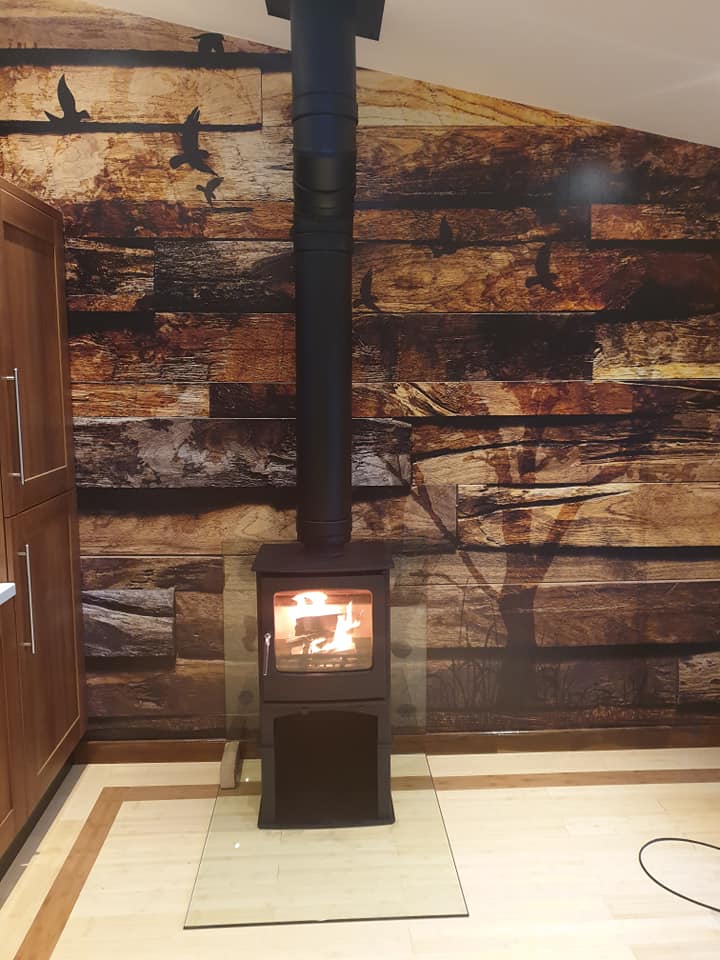
The mistakes you must avoid when buying a wood-burning stove
Many British homeowners end up jumping way too fast into the process of buying a fancy new stove because they get caught up in the whole daydream of finally owning one.
Instead of getting carried away with having a wood-burning stove and rushing through the whole buying process, it’s important to understand that it pays to be more careful than ever. Thankfully, you won’t have to be like the thousands of other buyers who ended up getting the wrong stove because simply keeping an eye on the different vital factors can make a world of difference.
If you’re about to get a wood-burning stove but don’t know how to ensure that all your efforts pay off, then there’s no need to worry because here’s a guide to the two mistakes you must avoid:
Mistake #1: Overlooking the heat output-related aspects
Considering the fact that you’re purchasing a wood-burning stove to heat things up in your home, it would be essential to ensure that the heat output matches up, right?
Unfortunately, far too many British homeowners make the same mistake of overlooking this crucial aspect every year.
Just like an air conditioner, a wood-burning stove heavily relies on a presence of compatibility with the size of a room, the present ventilation set-up, and the location of the doors and windows in the space. Instead of solely purchasing a stove based on its appearance, you must remember to focus on the heat output-related factors and look into the details to make sure that everything pans out correctly!
If you’re not entirely familiar with the concept of heat output or whether or not a model matches your space’s specifications, feel free to contact the experts at Stove Scotland so that we can help you find your perfect match!
Mistake #2: Cutting corners when it comes to installation
While most first-time buyers get things right when it comes to picking out the right heater and not cutting corners on wood-burning stoves themselves, they tend to cheap out on the places where costs matter most: Installation.
Given that the UK has tightened its regulations on wood-burning stove installations, it’s clear that homeowners must now exercise extra care in terms of how their appliance is installed and who gets the job done. Fortunately, you can ensure that your installation needs are in the right hands by not only shelling out some more cash but also getting a HETAS-accredited installer, such as Stove Scotland’s experts!
Conclusion
As dreamlike as the idea of finally owning a wood-burning stove may be, things can easily go wrong if you don’t make the needed adjustments and exert the necessary efforts to avoid common mistakes. With this guide's help, you can ensure that your experience of a honeymoon phase with your stove lasts for as long as possible!
Are you looking for a stove fitter in Scotland that can help you pick out the best wood-burning appliance for your home's needs? Our team of experts has got you covered. Get in touch with us today to learn more!
4 Tips to Improve Your Stove's Lifespan and Efficiency
Stoves, whether wood-burning or multi-fuel, are made to be sturdy and durable. This has caused many homeowners who have such stoves to leave them as is throughout their entire lifetime.
However, the truth is that, while stoves are made to last, there are many things you can do to extend their lifespan and even improve their performance. Also, stoves are susceptible to damage. If you do not take care of yours and let problems develop, it can start to perform poorly and eventually break down.

If you want to maximise your stove in terms of efficiency and lifespan, here is what you can do: 4 Tips to Improve Your Stove's Lifespan and Efficiency
1. Check the ash pan
After using your stove, you may be tempted to leave the ash pan as is. While this may not present a problem immediately, leaving it unattended will allow the ash to pile up. Over time, a large pile of ash can build up below the grate, exposing it to high temperatures. This can cause the grate to distort, which can negatively affect the performance and safety of the stove. To avoid this headache, remember to empty the ash pan after every use.
2. Clean the glass fitting
Most modern stoves will have glass fittings in front to allow light to enter the surrounding area and enable you to peer inside it. Unfortunately, as you use the stove more frequently, the glass can become dirtier and cloudier. If this is left unaddressed, it will impact the stove's aesthetics and even damage it.
While many stoves have a system in place to keep the glass clean, you will need to clean it manually from time to time. To do so, grab some newspaper and some vinegar to scrub the glass clean! Avoid using any abrasive products to ensure the glass does not get scratched.
3. Look for signs of rust
Rust is always a bad sign. If you find signs of corrosion forming on your stove, you should treat it right away. You can use wire wool to scrape the rust away and paint over the affected area to restore its original appearance. Be sure to be thorough with the scraping because it can come back even worse than before if you miss any spots.
4. Check the rope seals
Your stove will have rope seals built around and inside it to ensure its internal environment is separate from the outside. If the seal is broken, the heat will come out of the stove uncontrollably, making the stove less efficient and the surrounding area hotter than usual. Be sure to check around your stove for any signs of damaged seals. If there are any, change them right away.
Conclusion
While meant to be durable and strong, your stove will still need tender love and care to maximise its performance and lifespan. Follow the tips we have shared above to check your stove for potential issues and carry out the necessary fixes.
If you find more problems besides simple rust and believe that you cannot tackle them yourself, do not hesitate to hire professionals to care for your stove. While it is certainly an investment to work with experts, they will be able to give your stove the care it needs to function at maximum performance.
We are multi-fuel and wood-burning stove experts, providing services to install top-quality stoves in any home. If you are looking for maintenance service for your fireplace installation in Scotland, work with us today!
4 Steps to Keep Your Wood-Burning Stove Lit Overnight
There is a particular challenge that wood burners pose during cold nights—and that is ensuring that it keeps burning all night. However, it is doable as long as you know the right tips and tricks. However, before we tell you what you need to know to keep the fire going all night, make sure that your stove is in good condition and the right placement so that it does not pose a fire risk.

Here are the steps you should do to achieve your goal:
Step 1: Prepare Your Stove and Wood
The key to ensuring that your wood stove burns all night is to ensure it is in the right condition. That means allowing it to cool down before you heat it. Do this at least a few hours before you set up for the night. Make sure the stove is empty and free from any wood. Remove all the excess ashes and coals left inside.
Step 2: Find the Right Coal Placement
Instead of spreading the coal around at the bottom of the wooden stove, gather them together towards the front. This will prevent the coals from burning the logs all at once, lengthening the burning time. Placing the coals at the front of the stove also gives your stove an intense heat source to effectively ignite the logs.
Step 3: Put the Logs Behind the Coals
Once the coals are appropriately laid out, it is time to put in the chunks of wood. The number of logs you need will vary depending on the size of your stove and the type of wood you use. Usually, around five to seven blocks of wood are enough for one night. Place each piece parallel to the front, right behind the coals.
Your goal is to keep the logs burning all night, so make sure you use hard and big pieces. Make sure they are pressed to the back of the woodstove firebox. You may want to ensure that the woods are tightly packed and only the front log is right next to the coals. That is how you can make sure that only one of them will ignite first and that the next log will only fire up once it touches the coal. This technique will keep the fire going as long as possible throughout the night.
Step 4: Close the Door and Start Feeling the Warmth
Gently close the door of the stove so that the logs do not fall from their arrangement. Consider closing the damper to reduce the amount of air going into the stove. Doing so will help the furnace burn slower. Expect the fire to start a few minutes after. Using coal and well-seasoned wood can help the fire quickly spread over an extended period.
Conclusion
Wood stoves are a great source of heat, but you need to keep yours burning for long to enjoy the warmth it provides. Avoid waking up in the middle of a cold night just to refill your stove. Let the tips above help you sustain the fire as you sleep. The step-by-step guide above will allow your wood stove to provide you with warmth and comfort overnight.
Are you looking for a wood stove in Scotland? Stove Scotland is your source for stylish wood-burning stoves that can perfectly fit any room at affordable prices. We have many brands for you to choose from. Get your wood-burning stove now, and prepare yourself for the long winter ahead.
3 Safety Reminders for Installing a Wood-Burning Stove
Having a new stove—especially a beautiful wood-burning stove—installed in your home is always an exciting experience. Before you decide to install and operate one yourself, though, make sure you’ve familiarized yourself with the essential steps to take.
The price tag on a new stove can be quite heavy, inspiring many homeowners to save on installation by turning it into a DIY project. However, we’d very much recommend against it! Installing a wood-burning stove is nothing like putting in a new light fixture. One wrong move and you can burn your house down or unintentionally fill your indoor air with carbon monoxide.
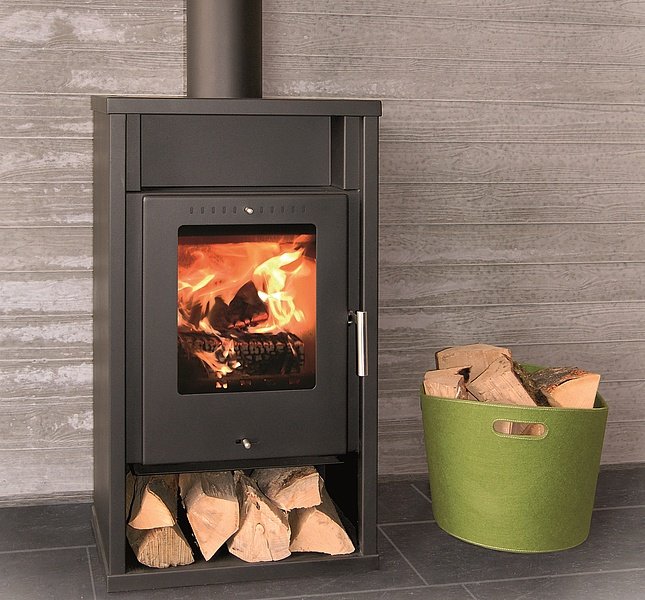
Having a professional install your stove is always the safest and most effective way to get the job done. If you already have an appointment, here are some important reminders to keep in mind before installation day arrives:
What You Need to Know Before Installing a Wood-Burning Stove
#1 The stove must adhere to local regulations
A wood-burning stove isn’t inherently the safest appliance. After all, it involves fire, which can be hazardous if you fail to control it correctly. That’s why your home or apartment has a certain set of regulations it is expected to adhere to when it comes to stove installations. If you are from the UK, your stove must comply with Part J of the UK building regulations. If you are from Scotland, read through Part F, and if you are from Northern Ireland, review part L. Here are the usually mentioned reminders to note:
- Your stove should have a hearth.
- The room where you will place it should have proper ventilation. Add a vent if necessary.
- Make sure to place your stove far from flammable materials.
#2 Always have a flue
If your home does not have a chimney and has no place to install one, you can always get a flue. The flue acts similar to the chimney, where the smoke, gas, and other products of combustion make their way outside of your home. Professional installers conduct a smoke test first to an existing chimney or a newly installed flue. That is how they ensure that there are no leaks inside your home.
Smoke contains harmful gases and other elements, and you need to ensure that they never stay inside your home. Your stove installers will also help insulate your flue to avoid fire, and they will seal off your flue and chimney to prevent bird nests and other blockages.
#3 A correctly installed and used stove can minimise pollution
Proper installation of your stove can ensure safety to your home, but knowing how to use it the right way can also improve your environmental impact. Here are the things you need to know:
- Use the right fuel - If you want to use a more environmentally friendly fuel, opt for dry wood or their smokeless counterparts. Apart from being lesser pollutants, they are also more practical to use. As much as possible, avoid using wet wood or house coal. They contain a high level of sulphur that will only make your home smokey, not to mention contribute more to air pollution.
- Avoid letting your stove slumber or smoke - Slumber is when you set your stove to burn on low output. What happens when you do it is you discharge the harmful gasses instead of burning them. Make sure that your stove always burns with a visible flame. A visible flame indicates that any toxic gasses the fuel releases is minimised.
Conclusion
Looking for a wood stove in Scotland? It’s best to hire a professional installer, like us! We’ll both supply and install high-quality stoves professionally, with unmatched service. Having someone knowledgeable about the way this machine works will help guarantee that your home and family are always safe.
Are you interested in getting a wood stove in Scotland? You have come to the right place. Stove Scotland can supply, install, and maintain wood-burning stoves for you. Contact us today to learn more about our services.
What’s the Best Wood to Use for a Wood Stove or Fireplace?
A wood-burning fire is a welcoming sight in any home, especially in the winter. Seeing that winter is fast approaching, and it’s likely that you’ll be spending lots of time indoors, you will need to stock up on plenty of wood for burning. Today, there are different types of wood that you can choose from. However, did you know that not all wood types burn the same?

If you want to have a comfortable time as you stay indoors during winter, here are two best types of wood you should get for your wood stove or fireplace:
Hardwood
This type of wood tends to be hotter and burn longer. They are also cleaner to handle, although they tend to be more expensive than its counterpart. Moreover, this is more prone to leave clinkers. Some of the types of hardwood firewood are the following:
- Maple
- Ash
- Birch
- Oak
When burning birch, be mindful of the phloem, which is the thick inner brown bark. The phloem retains lots of moisture that prevents the wood from drying evenly. For this reason, it’s best to mix birch with other types of hardwood for a cleaner burn, and this can also make it produce less smoke.
Softwood
If you are on a tight budget, but you still want to get that fireplace going, then consider looking at softwood options because of its affordable price tags. Just like hardwood, there are different types, but for a wood stove or fireplace, fir is the best choice. The downside of softwood is that it’s messy to handle because they can cause creosote to accumulate quickly in the chimney.
Now, you know the two types of firewood you can get for your wood stove or fireplace. If you want to make sure that your experience at home is worthwhile, here are some tips to follow:
- Ensure the wood is dry: Never burn insufficiently dried wood because it will produce less heat and more smoke. Make sure your wood is dry by stacking your wood properly where there’s good airflow. Also, you only need to cover the top, and before you burn it, make sure that it’s thoroughly dry. What you should do is to rotate your firewood to avoid wood rot and waste.
- Avoid some types of wood: Some people who want to save more money often opt for other types of wood to use for their wood stove or fireplace. It is important to avoid these because wood options, such as painted or varnished wood, pressure-treated lumber, driftwood, engineered sheet goods, and hardboard may pose risks to your stove metals, and it can also have an impact on health and safety.
- Be careful: When heating up your wood stove or fireplace, use enough paper to get the fire going. This is because excessive use of starter paper can contribute to a creosote buildup.
- Be safe: Comply with the recommended clearances when lighting up your wood stove or fireplace. It’s also vital to protect the floors using a fire-resistant floor pad, and have an active carbon monoxide alarm and smoke alarms.
Conclusion
Using the right firewood for your wood stove or fireplace is important. If it’s your first to go on a wood hunt and use them, the tips above will help you do it safely. With the right firewood, you will surely enjoy the warmth during the winter as you stay cosy inside your home.
Are you looking for a wood stove or fireplace installation in Scotland? Then you have come to the right place! At Stove Scotland, our experts can take care of this for you and also help maintain them in the long run. Get in touch with us today for a quote!
How to Enhance the Look of Your Wood-Burning Stove
After purchasing a wood-burning stove, the temptation to adorn your fireplace with touches of rustic decor is a strong pull. After all, there’s no better way to draw the focal point of your upgraded kitchen than to let your imagination run wild. However, safety should always come first. Whether you’re after something earthy or elegant, consider these tips for keeping your space both stunning and hazard-free.
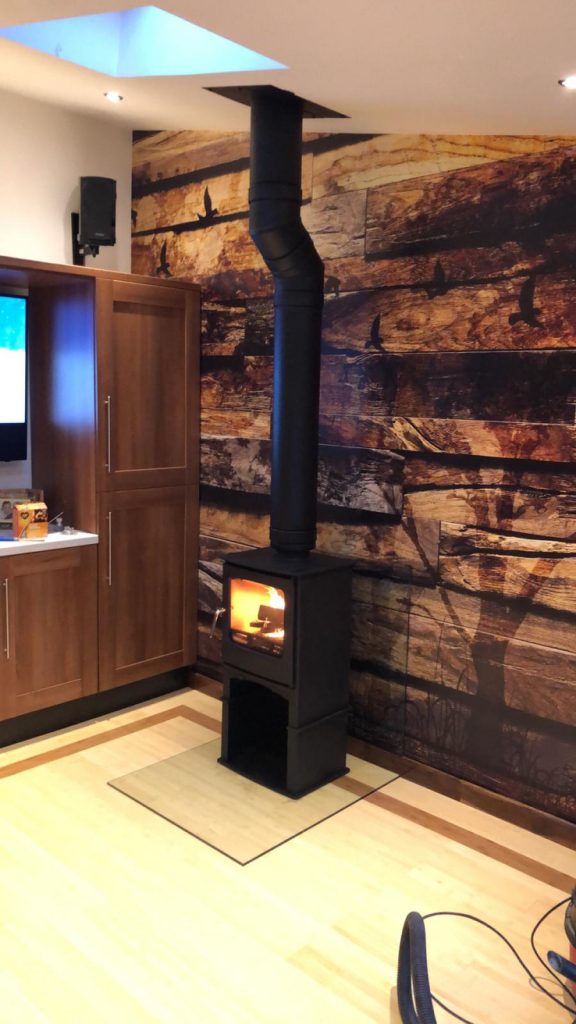
Tip 1 - Think About the Materials
When crafting your log-burner fireplace, you’ll want to avoid using paper products such as wallpaper or plastering. These materials can heat up and peel off or crack easier than you’d like.
Instead, fit your space with brickwork and stone, incorporating wood beams atop an alcove for a bit of design flair. Tiles and metal also make for popular materials when it comes to stove installation.
Tip 2 - Try a Raised Hearth
A raised hearth is simple, sleek, and timeless. A thick, tiled hearth is bold, whereas a thinner variety takes a daintier and more subtle approach. Combine your tiled stone hearth with a bit of rustic brickwork and wood beam for a lick of class.
Tip 3 - Fit a Stone Veneer
Traditional and bucolic, a stone veneer works perfectly around heat. It makes for the ideal home to a log-burning stove and is a project you and your family can DIY over a single weekend. Choose randomly-shaped stones or more organised, custom-size blocks.
Tip 4 - Create a Metal or Industrial Look
Metal backdrops compliment wood burners in a more modern fashion. Depending on your installation’s dimensions and your preferences, you can attach a pre-made metal panel to the wall or create a custom structure.
Metal reinforces an industrial look, perfect for homeowners after a refurbished warehouse or New York high-rise aesthetic.
Tip 5 - Put Up an Alcove or Flat Wall
If you have an alcove in your home, you can create a flat wall with specialist fireplace chamber lining panels. These materials are heat-resistant—a practical and economical choice that come in designs such as imitation red brick, black and oyster slate, and herringbone.
Tip 6 - Use a Standout Centrepiece
If you’re a little more daring, instead of a fireplace surround or wall-mounted stove, you can place your log burner in the middle of the room for a bit of oomph. If you’re having trouble selecting an appropriate surround, you can also opt to place your stove in a corner—a perfect Scandinavian touch to your home.
Conclusion
Stoves make for the ideal ambient addition to a cosy room and are an excellent source of heating during the winter season. If you’re suffering from skyrocketing energy bills, a stove may just do the trick. After only three years of using your stove, you’ll already start to see a return on your investment.
Fit your home with the right wood-burning stove with our experts at Stove Scotland. As local market leaders, we have access to all types of systems and provide all sorts of installation packages that will best suit your look and budget.
What Not to Burn in Your Wood Burning or Multifuel Stove
Burning any item can provide heat; however, each item generates different pollutants—some of which may be worse for the environment than others. This has been emphasised by the UK government when it launched a new clean air strategy in 2019. The goal is to make the air healthier breathe and protect nature, which can both positively affect the kingdom's economy. The whole country has a particular emissions target by 2020 and 2030, and every household is expected to participate in it!
If you have a wood-burning or multifuel stove at home, then you might be wondering what implications using it can bring to your gas emission contribution. You should know, though, that thanks to the development of the stove industry over the years, current wood-burning and multifuel stoves have improved a lot! These modern stoves are considered 80% more efficient than their earlier versions. They also create 80% fewer air pollutants than stoves once made years ago.
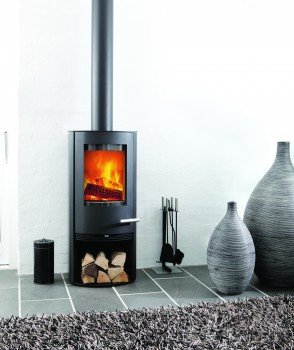
With a wood-burning or multifuel stove, burning waste is so simple to do; however, if you want to avoid bringing danger to the air you and everyone else breathe, here are the items that you should avoid burning at all cost:
Painted or treated wood
Any material that has been treated with chemicals will release toxic chemicals when burned. These chemicals will bubble and boil, discharging liquids and smell that can be hazardous to anyone's health.
Some might say that paints today have no lead content, but this fact will not make paints any less dangerous! They will still release harmful chemicals when burned—so be wary of throwing these into your stove.
Coloured paper
Like wood, any materials with colour has been treated with chemicals at some stage. That means burning pizza boxes, wrapping papers, cereal boxes, and magazines can be harmful to the environment! When burned, these materials release corrosive and carcinogenic gases into the atmosphere.
Any plastic
Did you know that burning plastic, even in small amounts, releases toxic chemicals such as sulphur dioxide, hydrochloric acid, heavy metals, and dioxins? These chemicals are extremely threatening to one's health and the environment. As such, no matter how infrequent you do it or how small you think the item is, never consider burning plastic products.
Chipboard, Plywood, etc.
Have you tried burning treated plywood versus a dry log? If you did, then you probably noticed how different the two were.
You will observe that the heat, smell, and even the smoke is different. Just because it is made from wood does not mean that it is okay for burning! These chemically-treated materials are more likely to release carcinogens and toxic fumes to its surroundings, so avoid burning plywood on your stoves.
Cardboard
Cardboards burn well, and it is one of the most common fuels for a wood-burning or multifuel stove. However, just like chipboard and plywood, this material is treated with resins and chemicals. As such, burning it releases toxic chemicals to the environment, endangering the lives of the people at your home.
Christmas tree
Unless you cut your Christmas tree directly from a forest, it is probably a treated home display. By this time, you already know how burning treated materials could harm anyone else. So, just do not consider burning that old Christmas tree!
Conclusion
The list can go on and on, and they can be overwhelming, but the rule of the thumb is this: any material that has undergone any chemical treatment should not be used as a fuel or burned on stoves. Always stick to what fuel is recommended by your stove manufacturer and clean it regularly to make sure that you are not contributing to the UK's air pollution!
If you have not converted your stove yet and want to switch to wood-burning stoves or multi-fuel stoves, we can help you find the right stove for any room! At Stove Scotland, we have comprehensive knowledge of stoves, and we supply, install, and even maintain them for you. Contact us today to learn more about our products and services.
Home Eating With Wood Stoves: 4 Reasons It's The Better Choice
Wood-burning stoves were an invention in Europe during the 16th century, but its timeless design and purpose have made it a renaissance among modern homes. The furnace has seen various improvements in its design, and it remains a hot commodity to this day thanks to its unrivaled friendliness to the environment.
It perfectly matches your central heating system as a complementary unit, but it can also make for an attractive, standalone heater in a room. Now that the colder months are approaching, the list below explores why a wood-burning stove is the best choice for heating your home.

Benefit #1: Exceptional Heating Source
There's no doubt that the fire you get from wood-burning stove tops are hotter, meaning that the heat can quickly and effectively spread throughout the room. Despite the old-world inspirations, the radiant heat emanates from all sides of the unit, making it better at warming the room than a vent system.
Benefit #2: Eco-Friendly
Modern wood-burning stoves consider its impact on the environment, so today's designs are tailored to meet the Environmental Protection Agency's (EPA) standards. Older stovetops could release a whopping 30 grams of smoke per hour, but it is now refined to a sustainable number of 2 grams of smoke per hour.
Not to mention, wood is significantly more eco-friendly than fossil fuels since it is carbon-neutral, which means the smoke doesn't increase the carbon dioxide in the atmosphere. Amidst the process of combusting the wood, the natural balance remains intact.
Benefit #3: Efficient And Reliable
Open fireplaces can be wasteful since the large space delivers only 25 percent efficiency, while a wood burner can be 80 percent efficient. This can help save thousands of dollars in your electricity bills since it only costs a third of the price of a kWh of oil or gas.
Not to mention, wood-burning stoves can also be a reliable heating source even during a power outage, allowing you to stay warm and comfortable around the clock regardless of your electricity supply.
Benefit #4: Stunning Decorative Addition
Wood-burning stoves pack as much panache as it is practical, making it an attractive unit that can complement your decor. Whether you choose sleek and straightforward designs for understated elegance or opt for a rustic look to add a vintage charm to your contemporary home, it's a stunning addition that can enhance both the form and functionality of your space.
The Bottom Line: Exploring The Timeless Benefits Of Wood Burning Stove
Wood burning stoves are making a hot comeback, promising to take the lead by providing higher efficiency compared to other heating sources like fireplaces. What was once a relic is now quickly becoming the better choice as new generations of wood-burning stoves prove to be eco-friendlier than its predecessors, reviving its place in the market.
Why Choose Us?
Offering both installation and maintenance of wood-burning stoves in West Lothian, our expert team represents the best in the industry as we strive to provide stove tops that suit the style and dimensions of your space.
We supply leading brands like Merlin, Aduro, Pod, and more, so we're confident that we can find the perfect stovetop that matches your home. Our products can attractively and efficiently heat your space, so you can sit back, relax, and enjoy the warmth it brings.
Choosing a Multi-Fuel or Wood-Burning Stove – What to Know
Using a wood-burning or multi-fuel stove is an eco-friendly and affordable way of keeping a room heated. Stoves can also create a cosy atmosphere in any room and provides an excellent visual focal point. Here are some things to consider when deciding between wood-burning or multi-fuel stoves.
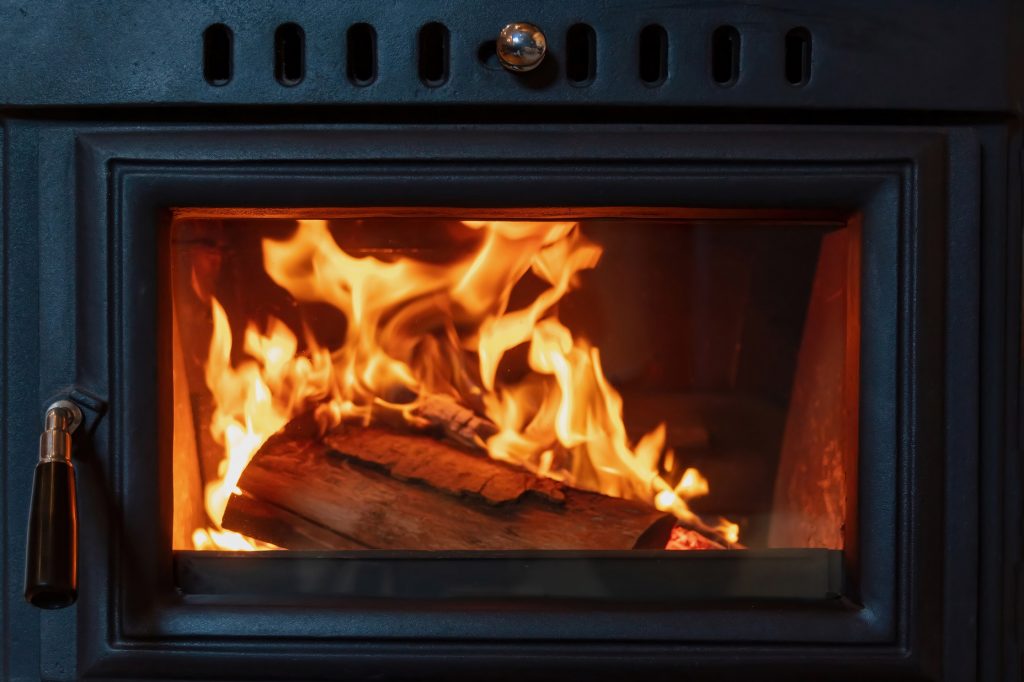
What to know about wood-burning stoves
Wood burns best on a flat bed of ash, which means this type of stove does not have a grate or tray. This design lets air come in from above, aiding in the combustion process and increasing your appliance's efficiency. Since there is no grate, you have an open viewing window, which could make for gorgeous photos.
If you have a nearby source of firewood, you do not have to pay for heating, and you can cut down on energy costs in the colder months. Keep in mind that you must dry or season your wood before burning it. If not, you wouldn't get a fire to start, and you would only get frustrated with the time it's taking for you to turn on the stove.
For safety, you should not leave this type of stove burning throughout the night. Since you do not have a grate, it's dangerously easy for burning ash to spit out and burn nearby furniture or textiles.
What to know about multi-fuel stoves
If you do not have a ready source of fuel in your home, this type of stove is the best choice. It can burn both solid fuel and logs, which means you can buy your supplies from petrol stations and supermarkets. However, do not get just any type of coal; smokeless coal, made from anthracite, is the best option for this stove.
Another distinctive feature of this type of stove is its raised grate. This keeps fuel off the bottom and allows air to circulate underneath. If you are using coal, this makes for a better and longer burn; however, it is not the same for wood. Although you can use wood in a multi-fuel stove, it will not burn as effectively.
The advantage of this kind of appliance is that you can leave coal burning on it for more extended periods, whether during the day or at night. Longer burning times means a more consistent source of heat, which could be the deciding factor for homes that want to install a stove for its capacity to heat rooms.
In all, a multi-fuel model has greater versatility. It is suitable for homes that tend to change their source of fuel or ones that get their supplies from stores. Alternatively, access to cheap or free wood means you would have more significant savings if you get a wood-burning stove.
Conclusion
When getting a new stove for your home, you should carefully weigh the pros and cons of each type. Both wood- and multi-fuel models have great features, and different kinds of burners are suited for different houses. If you are unsure which one fits your home, speak to a fireplace installer in your area.
If you're considering a fireplace installation for your Glasgow, Fife, or Edinburgh home, consult Stove Scotland. We supply Merlin, Aduro, Pod, and other top brands, and our expertise in stoves and fires allows us to provide clients with honest, reliable services at affordable prices. Contact us for a free quote today, or for more information!




